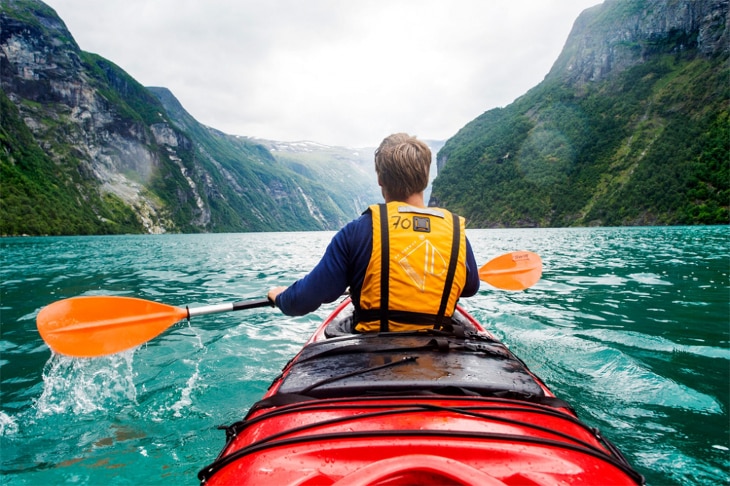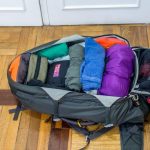Often, we hear the question, “What is a Kayak?” well, if you are one of them, you are on the right platform, and you are about to get your answer. By simple definition, kayak refers to a small and narrow watercraft that’s propelled with a double-bladed paddle. Most people confuse a kayak and a canoe.
Well, both have some similarities, but they also have significant differences that set them apart. Some of these similarities include: both are lightweight, powered by humans, and they can both be used for similar activities and in similar environments.
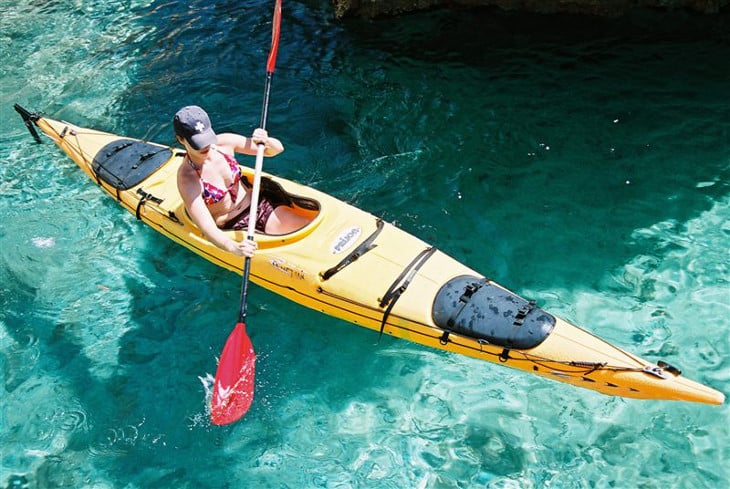
However, some significant differences can be observed in the design (cockpit, seats, and paddles) and how each is used thus helping one distinguish a canoe from a kayak.
Factors to consider when buying a kayak
- Your primary uses/ the type of paddling you want to do – Every boat is designed for a different type of paddling, and it’s important to get the right boat for your kind of paddling. Otherwise, it might not serve you as perfectly as it should, and its durability will be compromised.
- Where you are planning to use it – Some boats cannot be damaged even if they hit hard rocks while some cannot withstand even the slightest encounter with hard rock. Also, some boats do better in flat waters while others are excellent in rough waters. Therefore, you should know where you will be using your boat before purchasing it.
- Who you are planning to go with – Will you be carrying your dog along or maybe a friend? If yes, then know that there are single and double kayaks and it’s important you get the best accordingly.
- The kind of load you want to carry with you – Each boat has different cargo compartments in terms of size. Therefore, you should check if the space will be enough for everything you want to carry with you. Also to guide you is the kind of trip you are planning. You might need to bring more for an overnight trip than you would for a day trip.
- Your budget – Of course, your budget dictates the kind of kayak you end up buying, but my advice is, you’d rather take one more month to save enough for the best instead of going for a cheaper one then live with regrets.
Different types of Kayaks
Kayaks come in different basic types that are so specific to use. These several basic types include:
Whitewater Kayaks (Ideal for paddling fast moving rivers)
The Whitewater Kayaks do not have keel thus can’t track in a straight line which makes them very agile and maneuverable. Their cockpit is tight thus keeping the paddler on the boat, especially when in rough conditions. These boats are mostly short, 7-10 ft. and are perfect for paddling fast moving rivers.
Touring (ideal for long paddling excursions)
Features a well-defined keel, ideal for tracking, thus enabling it to track in a straight line, good primary stability, plus high secondary stability. With these boats, you get perfect turning from “edging” and comfort from the large cockpit interior making them ideal for long paddling excursions.
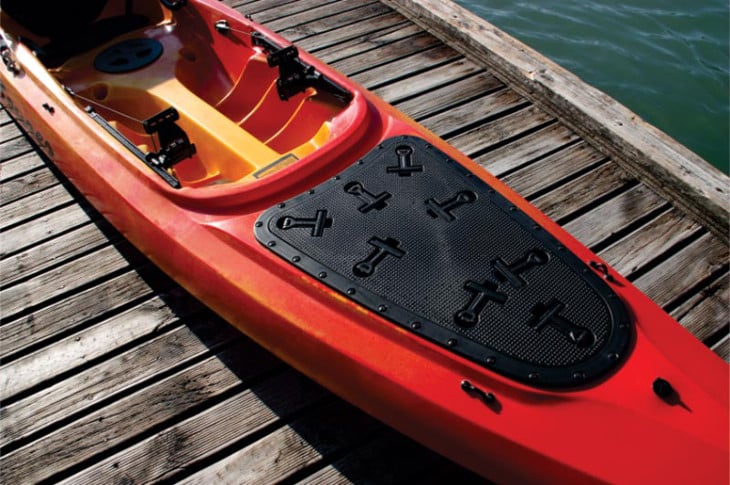
Large access hatches and bulkheads are available on most touring kayaks thus allowing safe, dry storage. The boats are ideal for lakes, flatwater, gentle-moderate inlets, wide rivers, and bays. You will also find some that are fitted with outriggers, rudders, and provisions for the sail.
Recreation Kayaks (Ideal for flat water paddling)
If you will be paddling in inlets, lakes, slow moving rivers and bays, then a recreational Kayaks is what you need. These are perfect for flat water paddling making them ideal for low-intensity paddlers and beginners as they tend to combine turning and tracking in a smaller hull. They have large cockpits and high initial stability thus serve as excellent platforms for hunting, photography or fishing.
Sea Kayaks (Ideal for open ocean paddling)
The Sea Kayaks are low in the waters, thus reducing the cross wind effects, they measure 15 ft. or more, and most of them have: much smaller cockpit openings, smaller access hatches, and bulkheads.
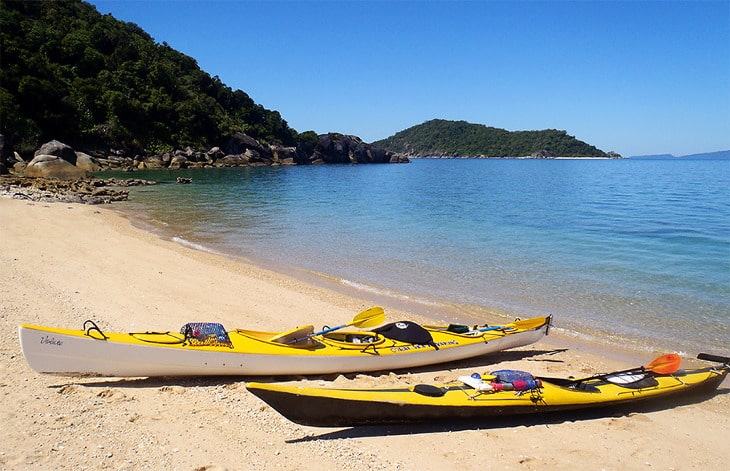
To compensate on crosswind pattern or a wave, some of these kayaks have rudders or skegs and also have other features like deck mounted pumps and compass housings.
Different Styles Kayak
There are two major styles when it comes to kayaking, and you choose one over the other based on the type of paddling you want to do, your personal preference and your skill level. The two styles are:
- Sit In – Kayaks in this style have an efficient hull design. They are dryer, allow greater gear storage, have properly fitted cockpits, you get an extended paddling season, and you can easily use your body to control your boat effectively. The Sit In style kayaks allows paddlers to use a skirt, has bulkheads that limit water infiltration and a hatch cover that’s properly fitted to provide flotation plus dry storage.
- Sit On Top (SOT) – Most paddlers who like to get an all over tan, play in the surf, get a stable fishing platform, have flexibility and mobility or emotional concerns, thus not able to use the Sit-In Kayaks find the Sit On Top kayaks ideal. With the Sit On Top kayak, you will have no worries swamping your boat as almost all of them are self-bailing.
Kayak Design Considerations
Tracking vs. Turning
Normally, a kayak that tracks well doesn’t turn as well, and this is why turning versus tracking make the biggest trade-off when it comes to boat design. However, these two features vary from one boat to another, and it’s also possible to make one that tracks well to turn better.
Stability
How much stability do you require for perfect paddling? There are two types of stability when it comes to kayaks: Initial/Primary stability and Final/Secondary stability.
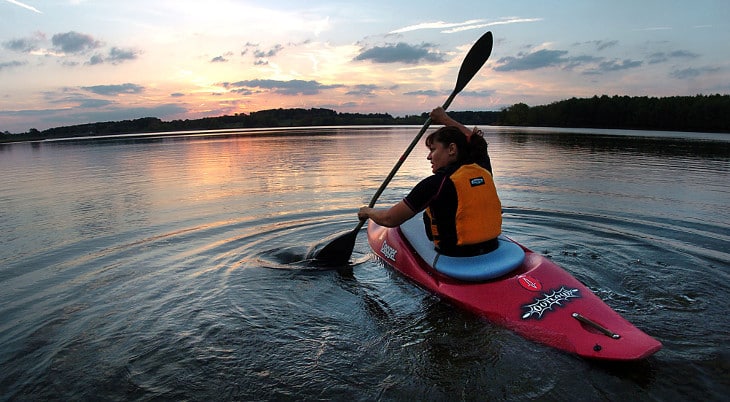
The Initial stability can be told by how tipsy the boat is while at rest and this helps in predicting how stable your boat will be when entering/exiting the boat or while on low motion activities e.g. fishing, bird watching or sunbathing.
The Final/Secondary stability can be told by how tipsy the boat is while underway.
Note: in almost all cases, boats with high primary stability are less likely to be stable while paddled in rough conditions and vice versa. Conversely, a more tipsy boat while in the immobile state becomes more stable when in peddling state and increases in seaworthiness as the conditions build.
The best guide when it comes to stability is knowing the kind of activities you will be doing and your level of paddling expertise because one tends to feel more stable as their paddling skills improves. Most advanced boats will have less initial stability than beginner boats for this reason, because they are likely to take a risk in rough conditions and they also need a fast boat which is often absent in beginner boats as are traded off for a wider beam.
Material
When it comes to kayaks, the materials range from fiberglass, plastic, wood, Kevlar, carbon, fabric with frame and inflatable plastic.
- Plastic: heaviest, but wins in resistant to damage and recyclable
- Fiberglass: rigid than plastic, but cracks on impact and not recyclable
- Kevlar and Carbon: Exotic, lighter, but costly
- Wood: rare, attractive, need sophisticated techniques for classic look
- Fabric with Frame: light and sometimes expensive option, collapsible
- Inflatable plastic: a portable & storeable kayak
Cockpit Considerations
You have four contact points with your boat: feet on the foot braces, knees on thigh braces or under the deck, hips on the seats’ sides, and the bottom of the seat. The four contact points should give you support and keep you comfortable. Paddlers should brace their feet and knees for turning and stability.
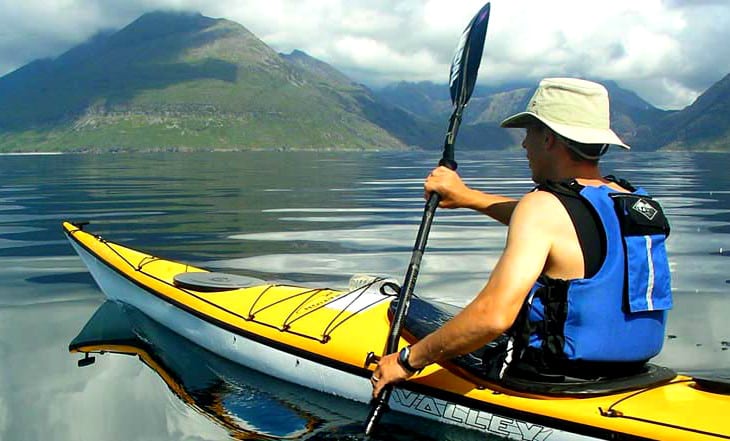
The whitewater boats are padded to give a tight fit to keep the paddler in their boats during a roll while the sea and touring kayaks feature a looser fit to give enough space to move about and stretch on long excursions. For people with large feet, they should ensure that fit upon the foot braces and under the deck comfortably.
Cockpit Rim Opening size
This size determines the ease of entering and exiting your boat. The newer Whitewater Kayaks and the Touring Kayaks feature an almost similar keyhole cockpit: close-fitting but fairly large keyhole cockpit giving peddlers snug while allowing a rapid and easy exit.
Original traditional Sea Kayaks features small cockpits thus reducing the possibility of large waves caving in their skirts and swamping their boats. Recreation Kayaks features very large cockpits thus can’t keep the peddlers in their boats in case it turns over.
Boat Length
Any peddler should know the importance of the boat length. It’s simple; longer boats are faster and more efficient in the water. When it comes to the boats’ volume, this depends on how big you are and what you want to carry with them, which is mostly determined by the type of trip you are planning e.g. for overnight trips, one will need a room enough for tents, provisions, and sleeping bags.
Single versus Double Kayak
We have solo paddlers and those who like a company. For solo paddlers, a single kayak is definitely the option for you while for those who like to paddle with their dogs or a friend, double kayaks are perfect.
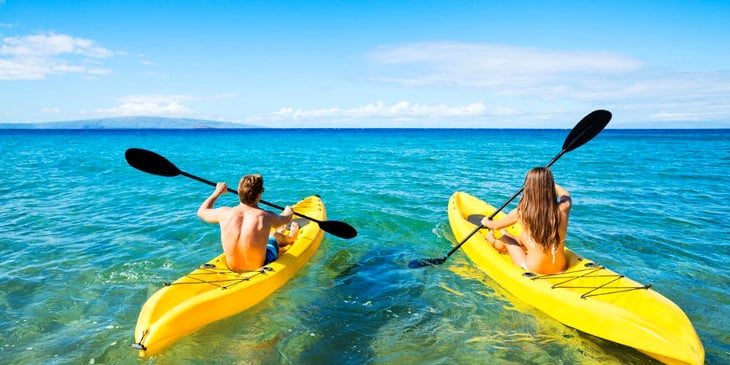
However, it’s important to note that single kayaks are more maneuverable compared to doubles, but doubles carry more gear. Also, most doubles are hard to paddle alone effectively, some are more stable compared to singles, but more difficult when it comes to rescuing and pumping dry.
Hatches
Only a few hatches’ seals are completely waterproof, and it’s a great advantage to have one that is because it’s important to keep all the water out when rolling. However, if you can’t find one that’s completely waterproof, there are other alternatives like keeping the essential stuff such as clothing and food in waterproof bags then put the bags in your hatch compartment.
Larger items need large hatch opening and also, it’s important to ensure that your hatch covers are securely attached because heavy surf and seas can break and blow them thus there is a risk of losing them. Also, paddlers should not depend on the hatches entirely. If your gear compartments are not full, always have floatation bags for boat floatation and watertight integrity.
Rudders and Skegs
For most touring kayaks, rudders and skegs are not necessary. However, long sea kayaks need a rudder to enable them to move straight, even in a cross wind. If you need a kayak with a rudder, ensure that the design is: durable, has a foot brace that’s easy to use and can be easily stowed.
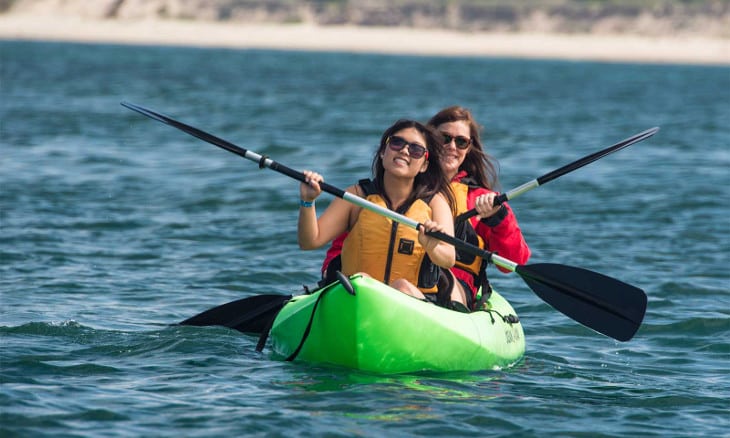
Alternatively, if rudder doesn’t work for you, just go for a retractable skeg. It does not work as perfectly as a rudder, but helps in trimming your boat making it more controllable in varying sea/wind conditions.
Boat Weight
When inquiring about the boat weight, keep in mind that you will always have to get it to and out of the water or on and off your car and even portage at times thus weight is very significant. Mostly, the boat’s material and design determines how heavy it is.
For example, rotomolded plastic boats are heavier compared to fiberglass, kevlar, and vacuum formed acrylic ones. However, you can consider getting a kayak cart to help in moving your boats.
Durability of construction
Again, your boats’ material plays a significant role in determining their durability. Each material has different durability, hence the durability of the boat in general. For example, plastic material will withstand abuse much better than fiberglass. It easily scratches but resists fractures and punctures better than fiberglass.

Also, to be safe, try and get all the necessary tools for boat repair and ensure that you have the right information/skills on how to go about it. Your boats’ maker will be in a better position to provide the right information.
It’s also important to ensure that you use the boat for what it’s designed for as this contributes a lot on its durability. For example, most of the Touring boats are easily damaged by a hard hit on rocks because they are rigid, but Whitewater boats withstand hard objects much better.
Cost
Boats’ prices, just like for other items, keep changing from time to time, so if you are planning to buy one, you better keep checking the trend. Also, some materials are more expensive than others. The size of the boat also determines its price. The longer/bigger the boat, obviously, the higher the cost.
Try it first
This can never be said enough! Never buy a boat blindly. You have to see it, feel it, and finally, test it before placing your money on it. Think of how frustrated you can be if you carry it all the way to the ocean only for it not to function as expected.
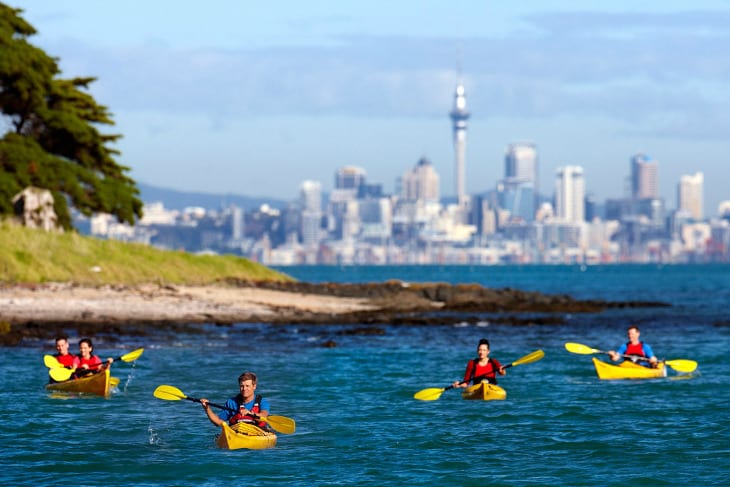
Always take all the time you need to try all the boats available before settling on one because it’s worth it. You can look for any dealer that rent boats or any demo models available and try different manufacturers/boat types. You can as well call the “Shack” then ask when you can demo your boat of interest.
Paddles
Never underestimate the importance of your paddles. Most newbies don’t know this, and they later learn the hard way. Simply put: your body = engine, your paddle = transmission.
Without a good transmission, even the best car will automatically move down the scale to being the worst car ever. You can never enjoy paddling if you chose a boat with a low-quality paddle so, just get the best one.
What else does a paddler need?
For safe and successful paddling, ensure you have a whistle, Personal Flotation Device (PFD) and a paddle. You will also have to be creative and come up with a way of removing water from the kayak. You can use a sponge or a pump. Ensure that you learn all the necessary skills for survival and handling your boat before taking in the water.
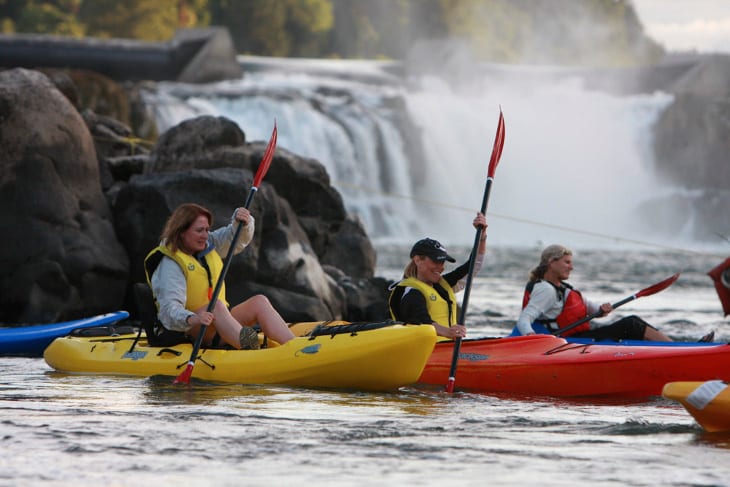
NOTE: One important feature every peddler should never fail to check and test before buying a kayak is the FOOT PEGS. Almost all the traditional kayaks had secure foot braces, but due to transformation from using a kayak as a hunting survival tool to more of a recreational art form, foot braces are given less attention. Whatever style kayak you choose to paddle, you should not compromise on getting a secure place for foot rest.
There are different types of FOOT PEGS such as adjustable foot pegs, molded in foot braces, and others with a fixed bulkhead. One sure thing is that a kayak without a foot rest is just incomplete as one will often slump forward, lack comfortable posture, and be unable to use torso-rotation thus can’t propel the kayak effectively.
Wrapping up
A kayak is definitely different from a canoe, and there are different types of kayaks all designed differently and used for different activities. It is important that one gets the right kayak for the type of activities they want to do and also, the kind of environment they want to use it. Each paddler should do some thorough research on the type of kayak they want, then test it before purchasing it to avoid unnecessary frustrations.


